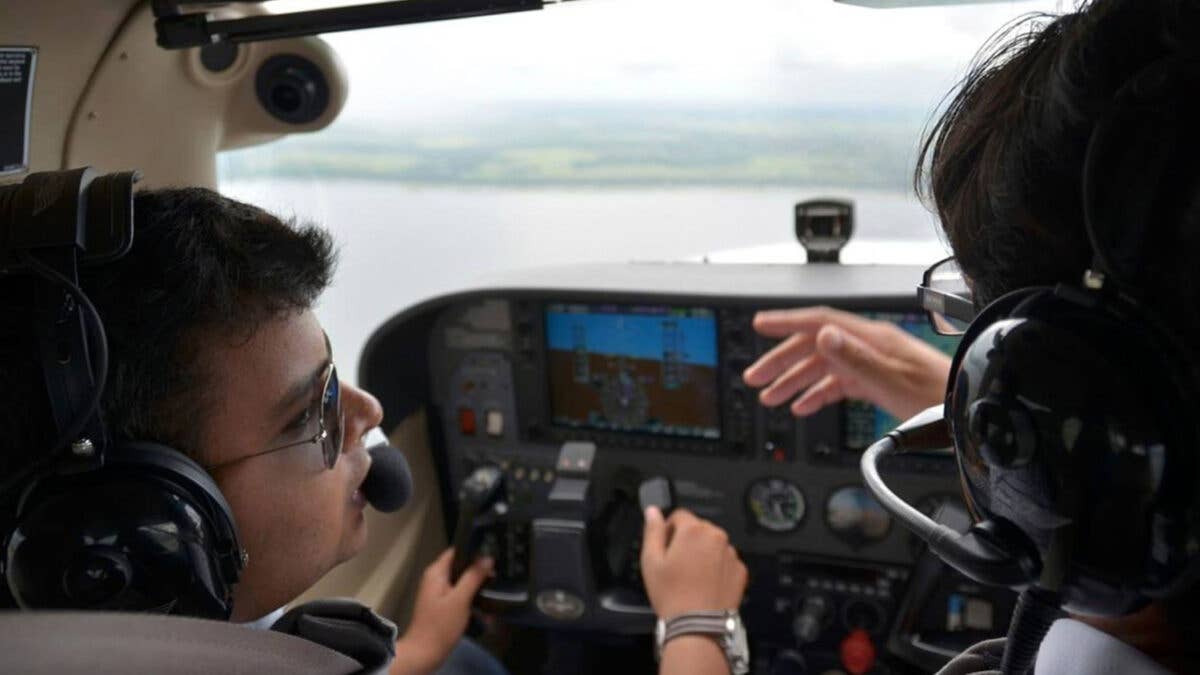Scaring Yourself Into Additional Dual Instruction
Every pilot frightens themselves at least once, and the experiences often make us better aviators.

If you scare yourself in the airplane, ask your CFI for more dual instruction. [Courtesy: Wayman Aviation]
The student pilot was signed off for solo flight, and his next two flights were supposed to be short hops out to the practice area to work on learned maneuvers. He was known for his attention to detail, use of checklists, and meticulous preflight planning.
So imagine my surprise when after his second solo flight he asked for additional dual instruction. He had scared himself, he said, and was worried he had done something wrong.
When I asked why, he said he had been out in the practice area early in the morning, self-announcing over landmarks as he had been taught. When he didn't hear anyone else on the frequency, however, he became concerned he wasn't using the correct one.
- READ MORE: Should I File an Initial Approach Fix?
The second thing that filled him with trepidation was that the aircraft was bouncing around in turbulence more than he was used to. Then, during his attempt to practice a slip, it felt so awkward he wondered if he was doing it wrong.
I assured him that every pilot scares themselves at least once, if not more, in their career—especially at first. These experiences often make us better aviators, especially when you deconstruct the event with an eye toward preventing it from happening again.
We started with the lack of radio contact. A review of the Aeronautical Information Manual (AIM) Chapter 4, 4.1.11 verified that 122.75—what he had been using—was indeed the air-to-air frequency and what many pilots use to self-announce.
He had been flying on a Saturday morning before 0800. Maybe he was the first one up?
What threw him was that the frequency is not printed on the sectional or terminal area chart. He had been looking for it on the chart around the vicinity of the airport.
- READ MORE: Always Look for a Place to Land
Before ADS-B, self-announcing combined with clearing turns was the primary means of achieving situational awareness. Pilots report over landmarks, announcing tail numbers and/or make and color of aircraft, their altitude, and the maneuver they are doing. For example, "Southeast practice area, green and white Cessna 172 over amphitheater, 1,400 S-turns, southeast practice area."
The turbulence, we surmised, was a combined product of the ground heating up as it was summer, and the fact the aircraft was considerably lighter without the CFI in it, so it was more easily displaced. He had slowed to maneuver speed as a precaution when he hit the bumps— exactly as he had been taught—and suggested perhaps he had overcontrolled the aircraft a bit.
We went over to the foothills where the bumps lurk so he could get more experience as Mother Nature batted us around like we were a cat toy. There was some experimentation with altitudes and a discussion of how to approach a ridgeline—always at a 45-degree angle—and knowing what topography will result in the least bumps. The green fields and water of the Puget Sound resulted in a smoother ride.
I had the learner take us up a couple of thousand feet and talked him through both side slips and forward slips until he felt comfortable. The fact that a slip is essentially cross controlling an aircraft is what made him nervous. He was practicing slips in the clean configuration, as the scenario was that the electrical system had failed. Therefore he had to do a no-flap landing, and he was high on final.
He noted the placard that reads "Avoid Slips With Flaps Extended." What followed was a discussion on obeying the placards and understanding why they are placed in an aircraft.
- READ MORE: Make Flight Reviews for CFIs Worthwhile
I advised him that slips do feel awkward at first, especially in a side-by-side airplane with a narrow cockpit. I have a vivid memory practicing them in a Cessna 140 with a broad-shouldered gentleman instructor. He was on the uphill side of the slip and asked me if this bothered me, as he was pretty much half in my seat on top of me. I replied, "Oh, no, we're fine," although I wondered if we were now legally married in certain cultures.
I did caution the learner, however, to warn his passengers before he entered a slip, as it can be a startling and uncomfortable maneuver.
At the end of the flight he had his confidence back. I was there the day he earned his certificate.
It’s not just the fledgling pilots that scare themselves, and it doesn’t even have to be something you did or didn’t do that throws you for a loop. I have written about far too many mishaps to take anything for granted. Every six months or so, I find the most experienced CFI I can and get some dual instruction.
You better believe that learning takes place.

Sign-up for newsletters & special offers!
Get the latest FLYING stories & special offers delivered directly to your inbox






